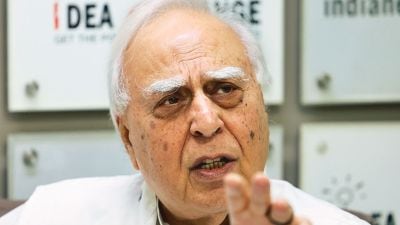International students now prioritising ROI, affordability, & jobs over prestige: Report
With uncertain job prospects, more students are choosing programmes aligned with workforce needs - technology, cybersecurity, sustainability, and healthcare.
 Students from India will remain one of the most vital student populations shaping this future, with students becoming more discerning, data-informed, and career-oriented than ever before (Express photo by Pradeep Kochrekar/ representative)
Students from India will remain one of the most vital student populations shaping this future, with students becoming more discerning, data-informed, and career-oriented than ever before (Express photo by Pradeep Kochrekar/ representative)International students are recalibrating their study-abroad decisions with a sharper focus on return on investment (ROI), affordable education pathways, and employability outcomes, according to ApplyBoard’s newly released 2026 Trends Report: Building and Rebuilding Global Education.
With policy shifts, rising costs, and tightening job markets across major destinations, students — especially from India — are choosing countries that offer stable policies, lower expenses, and clearer post-study work opportunities over traditional “prestige” options.
Affordability, employment, and stability taking priority
ApplyBoard co-founder and CEO Meti Basiri said that the study-abroad decision “is now, more than ever, a financial calculation,” with students prioritising tangible career outcomes and policy consistency.
The full ApplyBoard Building and Rebuilding Global Education 2026 Trends Report is available on the organisation’s website.
Financial pressures driving new choices
The report highlights that rising tuition fees and higher proof-of-funds requirements in Canada, the US, the UK, and Australia have prompted students to look beyond the English-speaking “Big Four.”
Germany and Ireland are emerging as the most affordable destinations, offering lower tuition fees and flexible pathways to work.
France and Spain are witnessing record enrolments, supported by housing initiatives and simplified visa processes
Policy tightening reshaping traditional markets
Stricter policies across established destinations are slowing demand. Canada is projected to see a 54 per cent drop in new study permit issuances in 2025 and 30 per cent decline in PGWP issuances.
Australia and the UK continue to host steady numbers but face hesitancy due to compliance rules and rising living expenses.
Growth of stable, non-Anglophone destinations
Countries offering policy stability and stronger workforce integration are gaining traction. Germany has crossed 4 lakh international students in the 2024/25 winter semester, supported by dual-citizenship reforms.
France aims to welcome 30,000 Indian students by 2030, pairing this target with clearer employment pathways.
South Korea and the UAE are expanding enrolments through extended work rights and streamlined immigration systems.
Global job market weakens, except in Australia
The report notes that new graduates will enter a softer global labour market. The World Bank forecasts the slowest global GDP growth of any decade since the 1960s.
In 2025, job vacancies fell 14 per cent in Canada and the UK, and 6 per cent in the US.
Australia is the exception, recording 3,27,000 job vacancies in August 2025 – 48 per cent above pre-pandemic levels.
Information technology remains the most resilient sector, while healthcare and social work continue to offer the largest volume of openings.
Shift toward future-proof skills and career readiness
With uncertain job prospects, more students are choosing programmes aligned with workforce needs – technology, cybersecurity, sustainability, and healthcare. Governments are also moving to embed work-integrated learning (WIL). Canada will fund 8,000 new WIL placements by 2028. Australian universities are expanding credit-bearing internships.
Global student mobility is expected to grow and may reach 10 million international students by 2030, but with more diversified and economically driven patterns. Indian students will continue to play a decisive role in shaping these trends, becoming increasingly data-driven and outcome-focused.
Basiri added that students are now prioritising “real outcomes, graduate employability, financial sustainability, and long-term security” as they navigate a changing global education landscape.




- 01
- 02
- 03
- 04
- 05



























